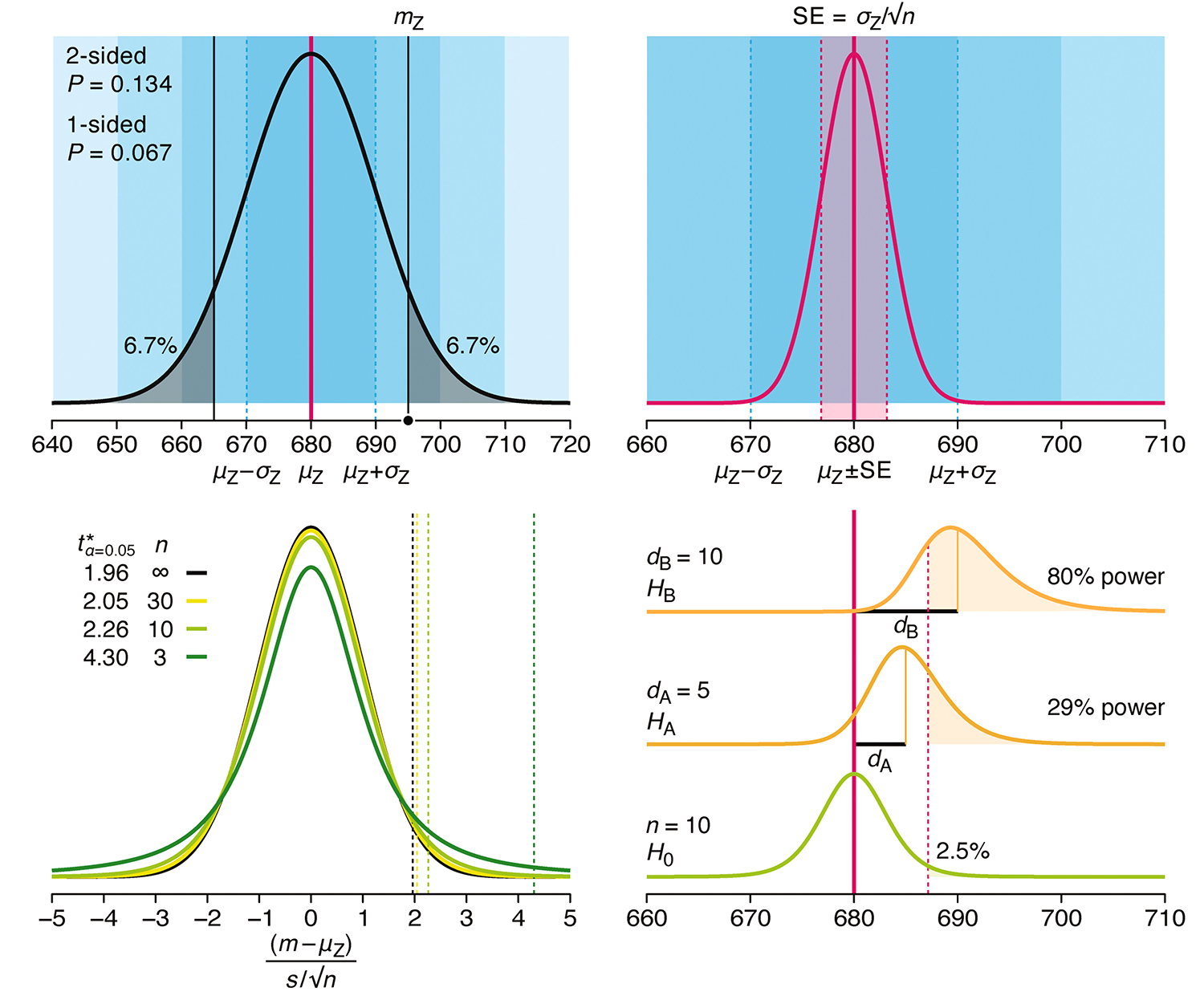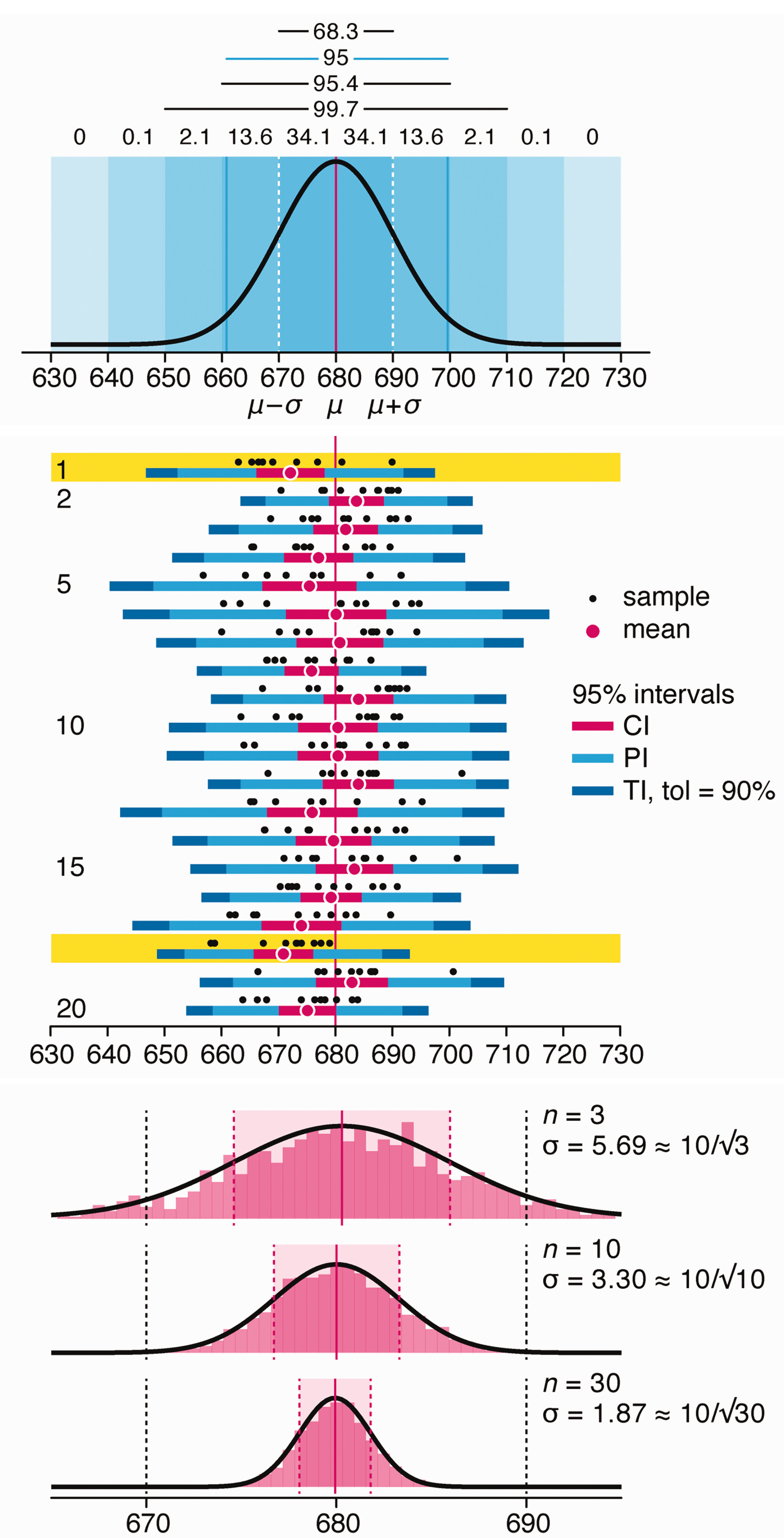words
+ meaning
Zen and the Art of Motorcycle Maintenance (excerpts)
The purely intellectual pursuits were the least affected by the subtraction of Quality. If Quality were dropped, only rationality would remain unchanged. That was odd. Why would that be?
— Robert M. Pirsig
Below are my favourite quotes and passages from the “Zen and the Art of Motorcycle Maintenance: an Inquiry into Values” by Robert M. Pirsig.
The book speaks eloquently and incisively about a lot of what is important to me: finding combinations of thoughts and feelings about art and science and apply them to effectively visually communicate complicated concepts and data.
Image from The Velobanjogent.
“
The melancholy know that many of the things we most want are in tragic conflict: to feel secure and yet to be free; to have money and yet not to have to be beholden to others; to be in close-knit communities and yet not to be stifled by the expectations and demands of society; to explore the world and yet to put down deep roots; to fulfil the demands of our appetites for food, sex and sloth and yet stay thin, sober, faithful and fit.
“
The truth knocks on the door and you say, “Go away, I’m looking for the truth,” and so it goes away. Puzzling.
“
“What's new?” is an interesting and broadening eternal question, but one which, if pursued exclusively, results only in an endless parade of trivia and fashion, the silt of tomorrow.
“
“Dad?” “What?” A small bird rises from a tree in front of us. “What should I be when I grow up?” The bird disappears over a far ridge. I don't know what to say. “Honest,” I finally say.
“
But there are human forces stronger than logic.
“
But the biggest clue seemed to be their expressions. They were hard to explain. Good-natured, friendly, easygoing—and uninvolved. They were like spectators. You had the feeling they had just wandered in there themselves and somebody had handed them a wrench. There was no identification with the job. No saying, “I am a mechanic.” At 5 P.M. or whenever their eight hours were in, you knew they would cut it off and not have another thought about their work. They were already trying not to have any thoughts about their work on the job. In their own way they were achieving the same thing John and Sylvia were, living with technology without really having anything to do with it. Or rather, they had something to do with it, but their own selves were outside of it, detached, removed. They were involved in it but not in such a way as to care.
“
The mechanics in their attitude toward the machine were really taking no different attitude from the manual’s toward the machine, or from the attitude I had when I brought it in there. We were all spectators. And it occurred to me there is no manual that deals with the real business of motorcycle maintenance, the most important aspect of all. Caring about what you are doing is considered either unimportant or taken for granted.
“
The new ones start out as good-looking strangers and, depending on how they are treated, degenerate rapidly into bad-acting grouches or even cripples, or else turn into healthy, good-natured, long-lasting friends.
“
So we move down the empty road. I don’t want to own these prairies, or photograph them, or change them, or even stop or even keep going. We are just moving down the empty road.
“
I was going at it in terms of underlying form. He was going at it in terms of immediate appearance. I was seeing what the shim meant. He was seeing what the shim was. That’s how I arrived at that distinction. And when you see what the shim is,in this case, it’s depressing. Who likes to think of a beautiful precision machine fixed with an old hunk of junk?
“
Some things you miss because they’re so tiny you overlook them. But some things you don’t see because they’re so huge. We were both looking at the same thing, seeing the same thing, talking about the same thing, thinking about the same thing, except he was looking, seeing, talking and thinking from a completely different dimension.
“
What you’ve got here, really, are two realities, one of immediate artistic appearance and one of underlying scientific explanation, and they don’t match and they don’t fit and they don’t really have much of anything to do with one another.
“
I want to divide human understanding into two kinds—classical understanding and romantic understanding.
“
A classical understanding sees the world primarily as underlying form itself. A romantic understanding sees it primarily in terms of immediate appearance.
“
The romantic mode is primarily inspirational, imaginative, creative, intuitive. Feelings rather than facts predominate. “Art” when it is opposed to “Science” is often romantic. It does not proceed by reason or by laws. It proceeds by feeling, intuition and esthetic conscience. In the northern European cultures the romantic mode is usually associated with femininity, but this is certainly not a necessary association.
“
The classic mode, by contrast, proceeds by reason and by laws—which are themselves underlying forms of thought and behavior. In the European cultures it is primarily a masculine mode and the fields of science, law and medicine are unattractive to women largely for this reason. Although motorcycle riding is romantic, motorcycle maintenance is purely classic. The dirt, the grease, the mastery of underlying form required all give it such a negative romantic appeal that women never go near it.
“
Although surface ugliness is often found in the classic mode of understanding it is not inherent in it. There is a classic esthetic which romantics often miss because of its subtlety. The classic style is straightforward, unadorned, unemotional, economical and carefully proportioned. Its purpose is not to inspire emotionally, but to bring order out of chaos and make the unknown known. It is not an esthetically free and natural style. It is esthetically restrained. Everything is under control. Its value is measured in terms of the skill with which this control is maintained.
“
To a romantic this classic mode often appears dull, awkward and ugly, like mechanical maintenance itself. Everything is in terms of pieces and parts and components and relationships. Nothing is figured out until it’s run through the computer a dozen times. Everything’s got to be measured and proved. Oppressive. Heavy. Endlessly grey. The death force.
“
Within the classic mode, however, the romantic has some appearances of his own. Frivolous, irrational, erratic, untrustworthy, interested primarily in pleasure-seeking. Shallow. Of no substance. Often a parasite who cannot or will not carry his own weight. A real drag on society. By now these battle lines should sound a little familiar.
“
The first is that the motorcycle, so described, is almost impossible to understand unless you already know how one works. The immediate surface impressions that are essential for primary understanding are gone. Only the underlying form is left.
“
Classical understanding is concerned with the piles and the basis for sorting and interrelating them. Romantic understanding is directed toward the handful of sand before the sorting begins. Both are valid ways of looking at the world although irreconcilable with each other.
“
When analytic thought, the knife, is applied to experience, something is always killed in the process. That is fairly well understood, at least in the arts. Mark Twain’s experience comes to mind, in which, after he had mastered the analytic knowledge needed to pilot the Mississippi River, he discovered the river had lost its beauty. Something is always killed. But what is less noticed in the arts—something is always created too. And instead of just dwelling on what is killed it’s important also to see what’s created and to see the process as a kind of death-birth continuity that is neither good nor bad, but just is.
“
Even in the presence of others he was completely alone.
“
No one really knew him. That is evidently the way he wanted it, and that’s the way it was. Perhaps his aloneness was the result of his intelligence. Perhaps it was the cause. But the two were always together. An uncanny solitary intelligence.
“
But apart from a personality what is there? Some bones and flesh. A collection of legal statistics, perhaps, but surely no person. The bones and flesh and legal statistics are the garments worn by the personality, not the other way around.
“
There is no perfectly shaped part of the motorcycle and never will be, but when you come as close as these instruments take you, remarkable things happen, and you go flying across the countryside under a power that would be called magic if it were not so completely rational in every way.
“
I’ve noticed that people who have never worked with steel have trouble seeing this—that the motorcycle is primarily a mental phenomenon. They associate metal with given shapes—pipes, rods, girders, tools, parts—all of them fixed and inviolable, and think of it as primarily physical. But a person who does machining or foundry work or forge work or welding sees “steel” as having no shape at all. Steel can be any shape you want if you are skilled enough, and any shape but the one you want if you are not. Shapes, like this tappet, are what you arrive at, what you give to the steel. Steel has no more shape than this old pile of dirt on the engine here. These shapes are all out of someone’s mind. That’s important to see. The steel? Hell, even the steel is out of someone’s mind. There’s no steel in nature. Anyone from the Bronze Age could have told you that.
“
Scientific questions often have a surface appearance of dumbness for this reason. They are asked in order to prevent dumb mistakes later on.
“
In the temple of science are many mansions-and various indeed are they that dwell therein and the motives that have led them there.
“
What has brought them to the temple-no single answer will cover-escape from everyday life, with its painful crudity and hopeless dreariness, from the fetters of one’s own shifting desires. A finely tempered nature longs to escape from his noisy cramped surroundings into the silence of the high mountains where the eye ranges freely through the still pure air and fondly traces out the restful contours apparently built for eternity.
“
I feel happy to be here, and still a little sad to be here too. Sometimes it’s a little better to travel than to arrive.
“
He’s unable to comprehend things when they appear in the ugly, chopped-up, grotesque sentence style common to engineering and technical writing. Science works with chunks and bits and pieces of things with the continuity presumed, and DeWeese works only with the continuities of things with the chunks and bits and pieces presumed. What he really wants me to damn is the lack of artistic continuity, something an engineer couldn’t care less about. It hangs up, really, on the classic-romantic split, like everything else about technology.
“
“Well, it isn’t just art and technology. It’s a kind of a noncoalescence between reason and feeling. What’s wrong with technology is that it’s not connected in any real way with matters of the spirit and of the heart. And so it does blind, ugly things quite by accident and gets hated for that. People haven’t paid much attention to this before because the big concern has been with food, clothing and shelter for everyone and technology has provided these.” But now where these are assured, the ugliness is being noticed more and more and people are asking if we must always suffer spiritually and esthetically in order to satisfy material needs.
“
I think present-day reason is an analogue of the flat earth of the medieval period. If you go too far beyond it you’re presumed to fall off, into insanity. And people are very much afraid of that. I think this fear of insanity is comparable to the fear people once had of falling off the edge of the world. Or the fear of heretics. There’s a very close analogue there.
“
It seemed as though every rule he honestly tried to discover with them and learn with them was so full of exceptions and contradictions and qualifications and confusions that he wished he’d never come across the rule in the first place.
“
And what he really thought was that the rule was pasted on to the writing after the writing was all done. It was post hoc, after the fact, instead of prior to the fact. And he became convinced that all the writers the students were supposed to mimic wrote without rules, putting down whatever sounded right, then going back to see if it still sounded right and changing it if it didn’t.
“
He just felt that no writer ever learned to write by this squarish, by-the-numbers, objective, methodical approach. Yet that was all rationality offered and there was nothing to do about it without being irrational
“
She couldn’t think of anything to write about Bozeman because she couldn’t recall anything she had heard worth repeating. She was strangely unaware that she could look and see freshly for herself, as she wrote, without primary regard for what had been said before. The narrowing down to one brick destroyed the blockage because it was so obvious she had to do some original and direct seeing.
“
As a result of his experiments he concluded that imitation was a real evil that had to be broken before real rhetoric teaching could begin. This imitation seemed to be an external compulsion. Little children didn’t have it. It seemed to come later on, possibly as a result of school itself.
“
When you try to climb a mountain to prove how big you are, you almost never make it. And even if you do it’s a hollow victory. In order to sustain the victory you have to prove yourself again and again in some other way, and again and again and again, driven forever to fill a false image, haunted by the fear that the image is not true and someone will find out. That’s never the way.
“
The purely intellectual pursuits were the least affected by the subtraction of Quality. If Quality were dropped, only rationality would remain unchanged. That was odd. Why would that be?
“
Squareness. When you subtract Quality you get squareness. Absence of Quality is the essence of squareness.
“
You take your analytic knife, put the point directly on the term Quality and just tap, not hard, gently, and the whole world splits, cleaves, right in two—hip and square, classic and romantic, technological and humanistic—and the split is clean. There’s no mess. No slop. No little items that could be one way or the other. Not just a skilled break but a very lucky break.
“
Romantic Quality always correlated with instantaneous impressions. Square Quality always involved multiple considerations that extended over a period of time. Romantic Quality was the present, the here and now of things. Classic Quality was always concerned with more than just the present. The relation of the present to the past and future was always considered. If you conceived the past and future to be all contained in the present, why, that was groovy, the present was what you lived for.
“
One thing about pioneers that you don't hear mentioned is that they are invariably, by their nature, mess-makers. They go forging ahead, seeing only their noble, distant goal, and never notice any of the crud and debris they leave behind them. Someone else gets to clean that up and it's not a very glamorous or interesting job.
“
The true work of the inventor consists in choosing among these combinations so as to eliminate the useless ones, or rather, to avoid the trouble of making them, and the rules that must guide the choice are extremely fine and delicate. It's almost impossible to state them precisely; they must be felt rather than formulated.
“
I think it's important now to tie care to Quality by pointing out that care and Quality are internal and external aspects of the same thing. A person who sees Quality and feels it as he works is a person who cares. A person who cares about what he sees and does is a person who's bound to have some characteristics of Quality.
“
This eternally dualistic subject-object way of approaching the motorcycle sounds right to us because we're used to it. But it's not right. It's always been an artificial interpretation superimposed on reality. It's never been reality itself. When this duality is completely accepted a certain nondivided relationship between the mechanic and motorcycle, a craftsmanlike feeling for the work, is destroyed. When traditional rationality divides the world into subjects and objects it shuts out Quality, and when you're really stuck it's Quality, not any subjects or objects, that tells you where you ought to go.
“
Romantic reality is the cutting edge of experience. It's the leading edge of the train of knowledge that keeps the whole train on the track. Traditional knowledge is only the collective memory of where that leading edge has been.
“
The leading edge is where absolutely all the action is. The leading edge contains all the infinite possibilities of the future. It contains all the history of the past. Where else could they be contained?
“
If your mind is truly, profoundly stuck, then you may be much better off than when it was loaded with ideas.
“
The fear of stuckness is needless because the longer you stay stuck the more you see the Quality—reality that gets you unstuck every time. What's really been getting you stuck is the running from the stuckness through the cars of your train of knowledge looking for a solution that is out in front of the train.
“
Nature has a non-Euclidian geometry of her own that seems to soften the deliberate objectivity of these buildings with a kind of random spontaneity that architects would do well to study.
“
The real ugliness is not the result of any objects of technology. Nor is it, if one follows Phćdrus' metaphysics, the result of any subjects of technology, the people who produce it or the people who use it. Quality, or its absence, doesn't reside in either the subject or the object. The real ugliness lies in the relationship between the people who produce the technology and the things they produce, which results in a similar relationship between the people who use the technology and the things they use.
“
This is the tat tvam asi truth of the Upanishads, but it's also reflected in modern street argot. “Getting with it,” “digging it,” “grooving on it” are all slang reflections of this identity. It is this identity that is the basis of craftsmanship in all the technical arts. And it is this identity that modern, dualistically conceived technology lacks. The creator of it feels no particular sense of identity with it. The owner of it feels no particular sense of identity with it. The user of it feels no particular sense of identity with it. Hence, by Phćdrus' definition, it has no Quality.
“
The way to solve the conflict between human values and technological needs is not to run away from technology. That's impossible. The way to resolve the conflict is to break down the barriers of dualistic thought that prevent a real understanding of what technology is— not an exploitation of nature, but a fusion of nature and the human spirit into a new kind of creation that transcends both.
“
The nature of our culture is such that if you were to look for instruction in how to do any of these jobs, the instruction would always give only one understanding of Quality, the classic. It would tell you how to hold the blade when sharpening the knife, or how to use a sewing machine, or how to mix and apply glue with the presumption that once these underlying methods were applied, “good” would naturally follow. The ability to see directly what “looks good” would be ignored.
“
The result is rather typical of modern technology, an overall dullness of appearance so depressing that it must be overlaid with a veneer of “style” to make it acceptable. And that, to anyone who is sensitive to romantic Quality, just makes it all the worse. Now it's not just depressingly dull, it's also phony. Put the two together and you get a pretty accurate basic description of modern American technology: stylized cars and stylized outboard motors and stylized typewriters and stylized clothes. Stylized refrigerators filled with stylized food in stylized kitchens in stylized houses. Plastic stylized toys for stylized children, who at Christmas and birthdays are in style with their stylish parents.
“
It's the style that gets you; technological ugliness syruped over with romantic phoniness in an effort to produce beauty and profit by people who, though stylish, don't know where to start because no one has ever told them there's such a thing as Quality in this world and it's real, not style. Quality isn't something you lay on top of subjects and objects like tinsel on a Christmas tree. Real Quality must be the source of the subjects and objects, the cone from which the tree must start.
“
The answer is Phćdrus' contention that classic understanding should not be overlaid with romantic prettiness; classic and romantic understanding should be united at a basic level.
“
It's been necessary since before the time of Socrates to reject the passions, the emotions, in order to free the rational mind for an understanding of nature's order which was as yet unknown. Now it's time to further an understanding of nature's order by reassimilating those passions which were originally fled from. The passions, the emotions, the affective domain of man's consciousness, are a part of nature's order too. The central part.
“
We have artists with no scientific knowledge and scientists with no artistic knowledge and both with no spiritual sense of gravity at all, and the result is not just bad, it is ghastly. The time for real reunification of art and technology is really long overdue.
“
The way to see what looks good and understand the reasons it looks good, and to be at one with this goodness as the work proceeds, is to cultivate an inner quietness, a peace of mind so that goodness can shine through.
“
I say inner peace of mind. It has no direct relationship to external circumstances. It can occur to a monk in meditation, to a soldier in heavy combat or to a machinist taking off that last ten-thousandth of an inch. It involves unselfconsciousness, which produces a complete identification with one's circumstances, and there are levels and levels of this identification and levels and levels of quietness quite as profound and difficult of attainment as the more familiar levels of activity. The mountains of achievement are Quality discovered in one direction only, and are relatively meaningless and often unobtainable unless taken together with the ocean trenches of self-awareness—so different from selfconsciousness—which result from inner peace of mind.
“
This inner peace of mind occurs on three levels of understanding. Physical quietness seems the easiest to achieve, although there are levels and levels of this too, as attested by the ability of Hindu mystics to live buried alive for many days. Mental quietness, in which one has no wandering thoughts at all, seems more difficult, but can be achieved. But value quietness, in which one has no wandering desires at all but simply performs the acts of his life without desire, that seems the hardest.
“
When one isn't dominated by feelings of separateness from what he's working on, then one can be said to “care” about what he's doing. That is what caring really is, a feeling of identification with what one's doing. When one has this feeling then he also sees the inverse side of caring, Quality itself.
“
Sometimes, when thinking about this, I thought that the idea that one person's mind is accessible to another's is just a conversational illusion, just a figure of speech, an assumption that makes some kind of exchange between basically alien creatures seem plausible, and that really the relationship of one person to another is ultimately unknowable. The effort of fathoming what is in another's mind creates a distortion of what is seen.
“
The gumption-filling process occurs when one is quiet long enough to see and hear and feel the real universe, not just one's own stale opinions about it. But it's nothing exotic. That's why I like the word.
“
Because we're unaccustomed to it, we don't usually see that there's a third possible logical term equal to yes and no which is capable of expanding our understanding in an unrecognized direction. We don't even have a term for it, so I'll have to use the Japanese mu.
“
Technology is blamed for a lot of this loneliness, since the loneliness is certainly associated with the newer technological devices—TV, jets, freeways and so on—but I hope it's been made plain that the real evil isn't the objects of technology but the tendency of technology to isolate people into lonely attitudes of objectivity.
“
Phćdrus saw Aristotle as tremendously satisfied with this neat little stunt of naming and classifying everything. His world began and ended with this stunt. The reason why, if he were not more than two thousand years dead, he would have gladly rubbed him out is that he saw him as a prototype for the many millions of self-satisfied and truly ignorant teachers throughout history who have smugly and callously killed the creative spirit of their students with this dumb ritual of analysis, this blind, rote, eternal naming of things.
“
They saw the future as something that came upon them from behind their backs with the past receding away before their eyes.










